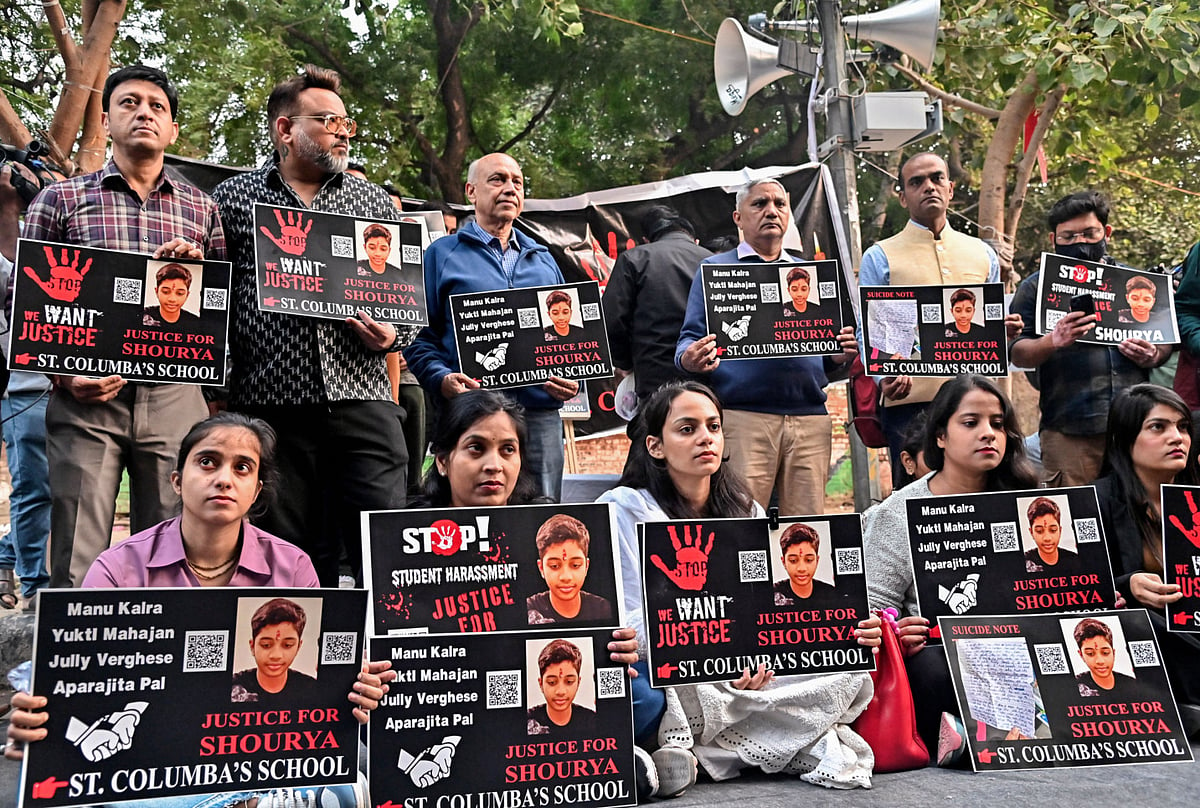India’s student suicide crisis deepens: Bullying, harassment and a system failing its children
New cases of bullying and alleged teacher harassment expose deep gaps in safety systems

Dubai: India’s already-escalating student suicide crisis took a disturbing turn last week as two children died following allegations of mental harassment by teachers, adding to long-standing triggers such as bullying, academic pressure and sexual misconduct by educators.
The events have again raised questions about whether schools — meant to be safe spaces — are becoming emotionally unsafe for the very students they are meant to nurture.
In Delhi, a 16-year-old Class 10 student died by suicide at Rajendra Place Metro Station after allegedly facing repeated humiliation by a teacher during Drama Club activities.
Police recovered a suicide note accusing the teacher of constant insults and gendered remarks — including telling him “boys don’t cry”.
Student suicide crisis — key takeaways
India recorded 13,892 student suicides in 2023, a 65 per cent rise over the past decade.
In 2022, India reported about 13,000 student suicides, representing 7.6 per cent of all suicides that year.
Total suicides in India in 2022 stood at 1,70,924, showing how significant the student portion has become.
Suicides linked specifically to exam failure in 2022 were 2,248, a small percentage of total suicides but a major red flag given rising deaths after NEET and IIT-JEE results.
The overall trend is sharply upward: student suicides have increased 34 per cent since 2019 and nearly 65 per cent over ten years.
Male students form the majority of student suicide victims across the country.
Maharashtra, Tamil Nadu and Madhya Pradesh reported the highest number of student suicides in 2022.
Academic pressure continues to be the strongest trigger, especially in coaching hubs like Kota where thousands compete for limited seats in top institutions.
Emotional distress, untreated mental health issues, family conflict, lack of recreational time and overwhelming study loads deepen students’ vulnerability.
Fear-based teacher–student relationships, humiliation in classrooms and bullying with sexual or psychological overtones are increasingly being reported as contributing factors.
Students often face a mismatch between their aptitude and parental expectations, leaving them feeling trapped and unsupported.
Those needing help can reach AASRA at +91 9820466726, and international support is available through Befrienders Worldwide at www.befrienders.org.
The boy’s death sparked massive protests by parents and students, who alleged that some teachers routinely “misbehave” with children, creating a culture of fear. Four staff members of St Columba’s School, including the headmistress, have since been suspended after being named in an FIR, but the investigation is ongoing.
In Rajasthan’s Jaipur, another family said their nine-year-old daughter took her life after months of bullying laced with “sexual connotations”.
The parents claim the school did nothing despite repeated complaints.
A third case, from Maharashtra’s Jalna district, saw a 13-year-old girl jump off her school building. While police say it is too early to establish motive, parents in the district point to rising emotional stress among schoolchildren as a worrying trend.
Aarohi Deepak Bidlan, a resident of Mastagad in Jalna, was studying in Class 8 at the CTMK Gujarati School in the district, and her father has alleged that she may have been “tortured” by her teachers.
These incidents point to a deepening crisis: The breakdown of trust between students and schools. What earlier manifested as academic pressure, bullying or isolation has expanded into something more alarming — teacher-student relationships marked by fear, humiliation and silence.
National emergency
Newly released NCRB data shows the severity of the national emergency. Student suicides have risen 65% in the past decade, from 8,423 in 2013 to 13,892 in 2023. Compared to 2019, the number of student suicides surged 34%. A student now dies by suicide every hour in India, with the rate growing faster than the national suicide average.
Experts say the rise reflects more than performance pressure. Students today navigate social anxieties, financial stress at home, fear of disappointing parents and a sense of emotional isolation.
The Supreme Court recently underscored mental well-being as part of the Right to Life, directing all educational institutions to install structured mental-health support systems — a ruling widely seen as overdue.
The key question, however, remains: Do suspensions solve anything? Psychologists say suspending teachers is a response, not a solution. It does not address the culture of public shaming in classrooms, lack of trained counsellors, outdated discipline practices or the absence of safe reporting systems for students.
Unless schools overhaul their structures — making counsellors central, training teachers to identify distress and creating confidential complaint cells — suspensions risk remaining symbolic.
The crisis demands systemic change, not case-by-case reactions. Until schools evolve from exam-driven institutions into safe emotional ecosystems, the country will continue to lose children who felt they had nowhere to turn.
Sign up for the Daily Briefing
Get the latest news and updates straight to your inbox
Network Links
GN StoreDownload our app
© Al Nisr Publishing LLC 2025. All rights reserved.
